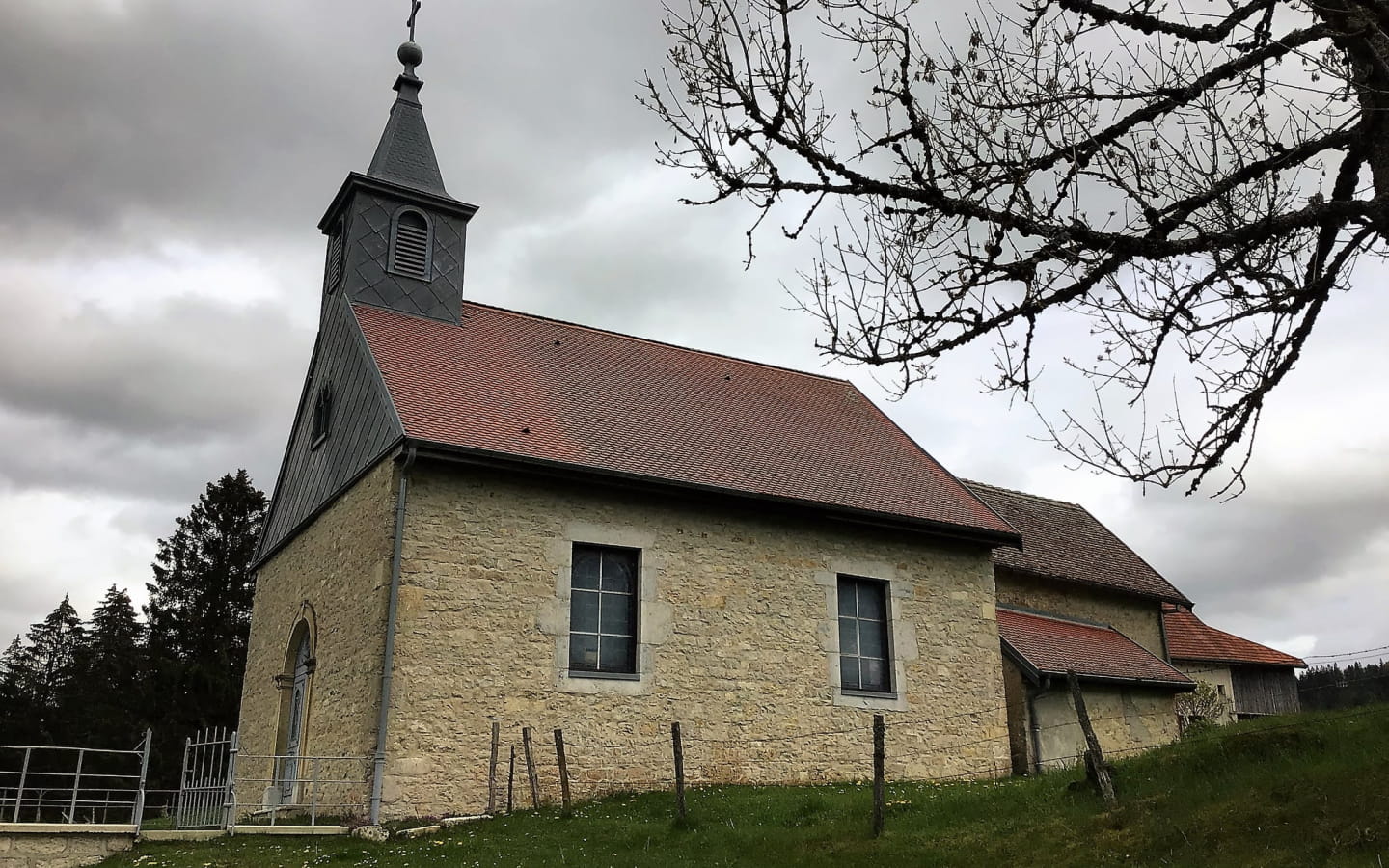
Chapelle de Montpetot
Chapel of the Assumption La Cluse and Mijoux de Montpetot
The chapel was built in the 17th century at the request of Jacques MATHEY, tax prosecutor and tabellion (clerk) of the justice of Joux on his estate at the place called "Chez Les Beuques".
In fact, Jacques MATHEY owned a meix in Montpetot, including a house and land. This is where he had the chapel built.
He wished to honour the Virgin and facilitate the fulfilment of the religious duties of the inhabitants of this hamlet. At that time there were few churches and the inhabitants of Montpetot were obliged to go to Pontarlier to fulfil their Christian duties.
It was founded on August 1st 1628 in honour of the Virgin Mary, Saint James, Saint Peter and Saint Sebastian. The Archbishop of Besançon approved this foundation on 6 August and appointed Antoine Mathey as the first chaplain.
It is stipulated that the patronage of this chapel will be given to the eldest of the heirs, according to custom. From 1729, the priests of Saint Pierre de la Cluse acted as chaplains and officiated in the chapel. Until the revolution, the vicars POCHARD. GUILLEMIN. POIX and GAUFFRE.
In 1830 Abbot LACROIX de LA CLUSE ET MIJOUX had a nave built.
The choir was transformed and decorated by Abbot GERRIER DE LA CLUSE ET MIJOUX in 1872. Abbot BAILLAUD had the stained glass windows installed.
Inside, the font consists of a shell perched on a column surrounded by flowers and leaves in relief.
In a gilded wooden niche, the Virgin Mary holds a sceptre in her right hand and the child in her left. She wears a high crown and her hair falls in braids on her chest. An object of veneration, as shown by the ex-votos that cover the walls
This chapel is linked to a very popular cult of the Virgin implored to ask for favourable weather for the harvests as well as to spare the region from various wars.
On 15 August 1870, a procession of 6,000 people came to ask the Virgin to spare the region and its soldiers from the Prussian attack.
During a year of drought, the inhabitants of a neighbouring village, led by their parish priest, came to beg the Virgin for rain. Were the prayers of the pilgrims so ardent? Were the priest's prayers so well chosen? But a few hours later, a downpour of water fell on the region, prompting the sexton to say to his boss, "Mr. Priest, you have made the remedy too strong.
It is said that unmarried boys had to beware of the girls of Montpetot, for they would bring them to the chapel and they would end up married.
The sailor of Montpetot:
This is a small wooden statue carved with art and whose origin goes back to a long time ago
According to tradition, an inhabitant of Montpetot, named DUMONT, brought this statue from the Holy Land. The ship on which he was embarking to return to France was attacked by a storm and thrown on a barbarian coast. The Moors seized DUMONT, stripped him of everything he owned, but he managed to keep his precious statue
Condemned to serve as a slave, he lived a long life of suffering and humiliation
After this ordeal, he succeeded in inspiring some confidence in his guardian through his gentle character
He was employed in agricultural work, with less supervision.
One day when he was in the middle of the countryside at hay harvest time, away from his fearsome jailer, the idea of fleeing suddenly struck him like a bolt of lightning. He mounted a mule, galloped away, reached the banks of a river that had to be crossed, reached the other bank with difficulty, and then finally continued his journey happily.
On his return to his native land, he had an oratory built and placed there the holy statue to which he attributed his deliverance. Later on, this oratory was enlarged and transformed into a chapel with an altar where the parish priest of St. Peter's and the priests of the neighbourhood frequently come to celebrate mass.






